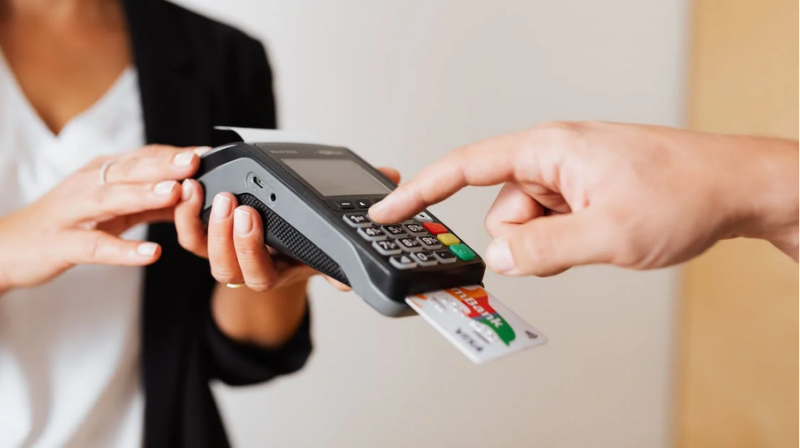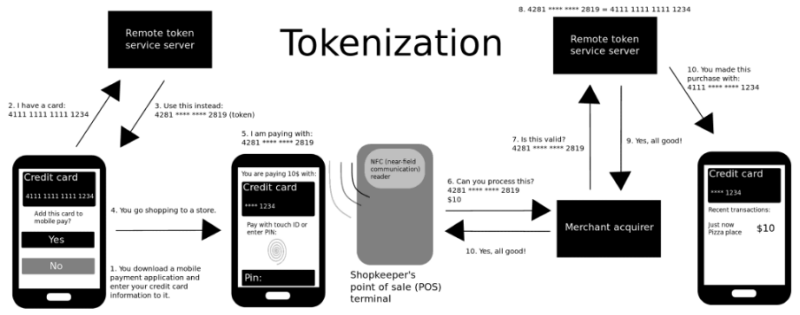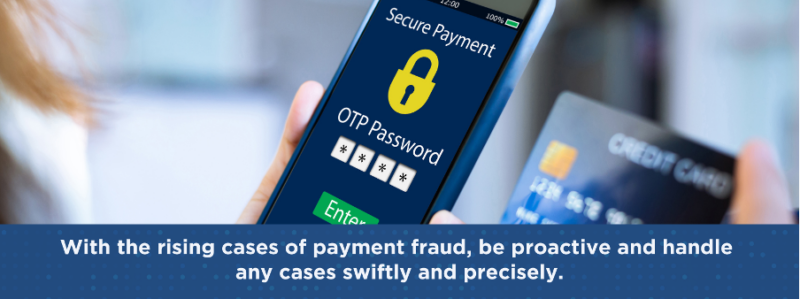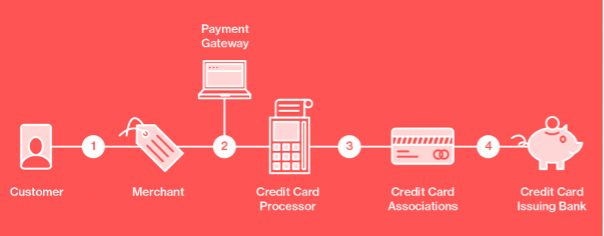Nowadays, fraud detection tactics are getting smarter. The double-edged sword called technology that criminals use to defraud customers and merchants is the same one that helps you to identify and stop their activities. Here you will learn some security measures to aid in SMB fraud prevention.
Whether they land phishing emails in your inbox or resort to the hilariously named monkey-in-the-middle attack, you’re armed with tools and tactics to protect your store and customers.
As fraud detection methods keep evolving, your store’s security measures must also be updated to stay ahead of the fraudsters’ game.
The way to protect your store from payment fraud is to secure your payment gateway because that’s where the fraudsters’ jackpot lies.
A payment gateway is a system that validates your customers’ card details to enable the transfer of funds to your account.
It’s the most vulnerable point because, with just one instance of slackening in security, the payment card details could become available to fraudsters.
Protecting your store from payment fraud has several benefits for your store and customers which include:
- Preventing financial loss to you the merchant, and the customer
- Preventing downtime which leads to loss of revenue for your business
- Giving your store a good reputation that earns you the trust of customers
- Making your business compliant with security regulations such as the Payment Card Industry Data Security Standard (PCI-DSS)
With that said, we’ll now show you steps to take in order to detect and prevent fraudulent payment at your store, using anti-fraud tools and other means.
Step 1 – Install an SSL Certificate
A Secure Sockets Layer (SSL) is a digital certificate that authenticates a website’s identity and allows encryption of transactions between a web browser and a web server.
It contains the domain name, public key, the issuer’s signature, expiration date, and other information that validates the identity of a website.
When you install this certificate, it will be visible to your site visitors as a padlock icon next to the URL in your browser bar, assuring them that any information they leave on your site is safe.
An SSL certificate has an encryption algorithm that converts customers’ sensitive data such as Personal Identification Numbers (PINs), Internet Protocol (IP) addresses, or account numbers into a code that fraudsters can’t read.
The best SSL certificate for business websites such as your store is an Extended Validation (EV) certificate, which has several other benefits:
- Displays the EV green bar and Hypertext Transfer Protocol Secure (HTTPS) padlock on your address bar
- Enhances your website’s Search Engine Optimization (SEO) rankings according to Google
- Compatible with most browsers such as Firefox, Safari, Opera, Netscape, and Internet Explorer
Some stores obtain free SSL certificates from their hosting provider, but these kinds of certificates offer a low-security level, have no warranty cover in case of a breach, and can’t cover multiple domain names if you own several of them.
The best way is to get a paid SSL certificate from trusted Certificate Authorities (CAs) such as GeoTrust and Comodo, and you’ll have taken the first step to protect your store from payment fraud.
Did you know that an SSL certificate can also help your site rank in search engines?
Google takes your customers’ security seriously and it announced that SSL-certified websites will rank higher on search engines, another great reason to make sure you get the certificate.
Step 2 – Invest in Fraud Prevention Tools
Fraud prevention tools are used to confirm whether the customer who entered the card details is a legitimate cardholder.
They include Address Verification System (AVS) and Card Verification Value (CVV).
How an AVS Fraud Detection Tool Works
AVS checks whether the customer’s billing address (numeric address and ZIP code) matches the address recorded by the bank that issued the credit card.
When a customer wants to make a purchase, your store’s payment processor will automatically forward the billing address in the customer’s order to the credit card company, which then returns a code showing how well the two addresses match.
The codes usually show a partial, full, or no AVS match, as shown in the table below.
| AVS Code | Level Of Matching | Interpretation |
| X | Fully matching | The street address and a nine-digit ZIP code match |
| Y | Fully matching | The street address and a five-digit ZIP code match |
| W | Partially matching | Nine-digit ZIP codes match but the street address doesn’t |
| Z | Partially matching | Five-digit ZIP codes match but the street address doesn’t |
| A | Partially matching | The street address matches but the ZIP codes don’t |
| N | No match | The street address and the ZIP codes don’t match in any way |
If there is a partial match (W, Z, or A) or a mismatch (N), you can decide to cancel the transaction.
However, the best thing is to first contact the real card owner and confirm whether they made the transaction.
How a CVV Fraud Detection Tool Works
CVV checks whether the card bearer is the authentic owner by requesting a three or four-digit code on the back of a credit or debit card, which confirms the owner of the card actually has it.
Unless a fraudster has stolen the physical card, they wouldn’t know the CVV number through the card details obtained online, the reason being that CVV numbers aren’t stored with other card details.
Therefore, if your store prioritizes requesting the CVV on the physical cards, fraudsters won’t be able to purchase with a stolen card.
Step 3 – Encourage Customers to Tokenize Their Cards
Card tokenization is a process where your customers’ card details are converted into a string of random characters called a token, allowing them to make purchases without revealing their card details.
These tokens can’t be read by fraudsters. Your store’s payment processor is the only one that can do that.
After the transaction is completed, anyone can read them but at this point, the tokens become useless to fraudsters since they can’t be reused.
The table below compares different payment gateway providers that support tokenization:
| Payment Gateway | Cost | Ease of Integration | Supported Payment Types |
| Total-Apps | 2.5% + $0.25 per transaction | Easy | Credit cards, debit cards, Apple Pay, Google Pay |
| Stripe | 2.9% + $0.30 per transaction | Easy | Credit cards, debit cards, Apple Pay, Google Pay |
| Square | 2.9% + $0.30 per transaction | Easy | Credit cards, debit cards, Apple Pay, Google Pay |
| PayPal | 2.9% + $0.30 per transaction | Moderate | Credit cards, debit cards, PayPal balance |
| Braintree | 2.9% + $0.30 per transaction | Difficult | Credit cards, debit cards, PayPal, Venmo |
Credit card tokenization has several benefits:
- Your customers’ information is protected since the actual card details aren’t stored.
- It’s compliant with the Payment Card Industry Data Security Standard (PCI-DSS).
- It reduces false declines where cards are rejected without any incidence of fraud.
- Customers enjoy a faster checkout since they won’t enter their card details manually.
By tokenizing your customers’ cards, you’ll remove their information from your network and minimize the chances of fraudsters getting hold of them.
| Action: Encourage your customers to opt for tokenization by informing them of the benefits and how to set it up. |
Step 4 – Train Employees to Detect and Stop Payment Fraud
Comprehensive employee training on fraud awareness is necessary to help your employees spot where your store is vulnerable to payment fraud.
Train your employees to smell fraud from a mile away by analyzing customer behavior to detect unusual patterns.
Since your employees are familiar with the shopping habits of your longtime customers, they can identify abnormalities in the customers’ orders, such as:
- Are they making more transactions than normal?
- Are the orders suspiciously larger than they normally purchase?
- Is the billing address showing different locations with each purchase?
Train your employees so that in such a case, the real card owner isn’t the one using it, and action needs to be taken.
Your employees need to understand that just because someone bought with a card doesn’t mean they’re the authentic card owner. It could be stolen.
They should be able to take action and cancel the order, then contact the real card owner to confirm whether they made that order.
Be very clear with your employees about the consequences payment fraud brings to them. Go a step further and give real-life cases of how employees have lost their income source due to loss of business revenue.
As you train your employees to detect and prevent payment fraud, your store, customers, and workers are protected from financial loss.
| Expert Tip: Implement a reporting system that allows employees to anonymously report suspicious activity. This ensures that fraudulent activity is detected and addressed promptly. |
Step 5 – Teach Your Customers How to Avoid Payment Fraud
Your customers are useful in the fight against payment fraud. They’re card owners and should be taught how to make it hard for fraudsters to access their card details.
When you educate them on the tactics fraudsters use, they’ll be aware of their vulnerability and be eager to protect themselves.
The following tips are useful in educating your customers on how to fight payment fraud. They include:
- Providing information on security measures by dedicating a page on your website to payment fraud matters
- Encouraging your customers to change their passwords regularly and to use strong passwords with a combination of letters, numbers, and symbols
- Sending regular notifications to your customers reminding them to check their account activity and report suspicious activity
By applying these tips, you’ll build trust and confidence in your customers and help them feel secure when making purchases from your store.
| Bonus Tip: Encourage customers to use two-factor authentication whenever possible for added security. |
Your Store Shouldn’t Be a Victim of Payment Fraud
It’s nerve-wracking to be in possession of your customers’ sensitive details, knowing that a data breach could happen anytime and make you lose customers.
You may also have chargebacks thrown at you by customers claiming compensation for their financial loss.
The good news is that all this activity can be stopped in its tracks before your store and customers incur financial losses, and it starts with securing your payment gateways.
From installing SSL certificates to educating employees and customers on payment fraud, the methods we’ve discussed will help you stay ahead of fraudsters’ tactics.
When you rely on Total-Apps and our 20 years of payment processing experience, you’ll prevent potential issues before they arise.
Total-Apps has an array of services such as credit card processing, PCI compliance, tokenization, and virtual terminals.
And if you ever need help to quickly set up new merchant accounts, we’re ready to assist.
Our focus is to provide merchant account services and advanced payment processing solutions to help your business grow, while also managing payment risk.
“…My business needed merchant services…Total-Apps guided us through the process to find the best fit for our business….” —Michael M, CEO/President, Publications Company
“…We had a void of experience with merchant services. We decided to go with Total-Apps because they have a comprehensive offering…Total-Apps has become a trusted advisor during our successful launch.” —Tom W., CEO Fitness + Nutrition MLM
Please call us at 1-833-633-9127 and we’ll answer your payment processing and merchant account questions.






